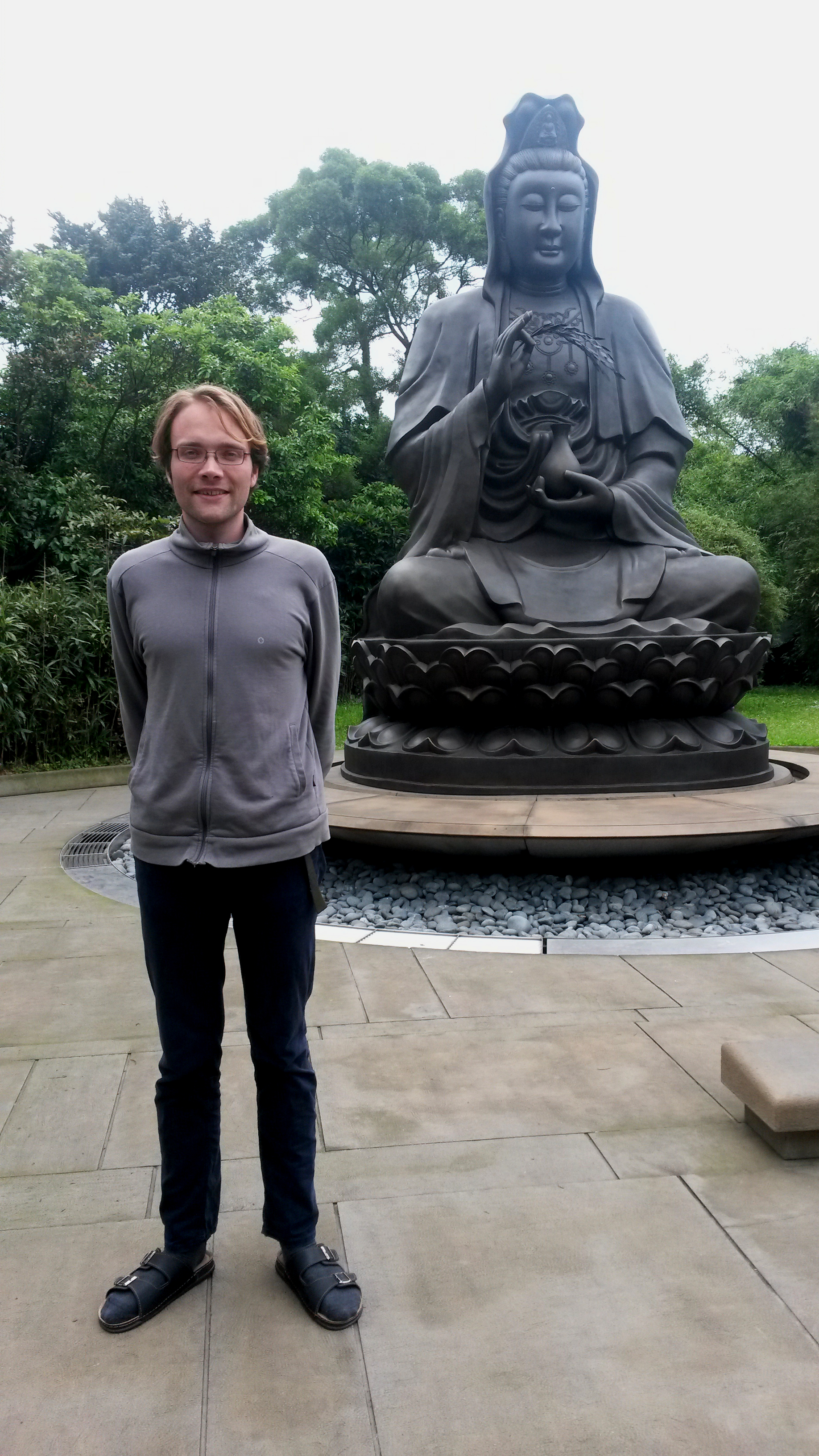My Experience of Studying Buddhism in a Monastic Environment

My name is Sebastian Nehrdich and I am a student of Buddhist Studies at the University of Hamburg. I joined the bachelor program of the University of Hamburg in autumn 2012 and plan to finish my bachelor degree this summer. My future plans are to continue my studies by joining the master program of the University of Hamburg in autumn 2017. The focus of my work lies on reading buddhist primary sources, e.g. sources in Sanskrit, Chinese, Tibetan and Pāli. My main area of interest in this field is Buddhist philosophy, especially Indian Yogācāra/Vijñānavāda and the Chinese Weishi (唯識) school.
Buddhism Studies as My Major Subject
Before I joined the university I had already started practicing meditation in the Vipassanatradition as taught by S.N. Goenka, which spiked my interest in Buddhism. After my first experience of meditation I decided to go on a long journey by bicycle from Europe to India in order to look for deeper spiritual experiences. After a longer period of meditation in India I finally decided to go back to Germany and start to study Buddhism as my major subject at a German university.
Study and Spiritual Practice Come Together at DILA
When I first arrived at DILA, I was very pleasantly surprised by the calm and positive atmosphere of the campus. This is very different from the experience of studying in the west, where the universities are usually located in the busy and noisy centers of the cities, surrounded by a lot of distracting influences. The DILA on the other hand shows a very different concept. Here study and spiritual practice come together, as can be seen for example by the meditation classes that the students here are expected to join. Community life and study form a very close union here, since all the students live together on the same campus, share the meals together and engage together in extracurricular activities. The contact with the other students and the teachers is thus very positive. In western universities on the other hand the experience can be much more anonymous, as thousands of students are sharing the same facilities and the private life of the students and the life at the university are rather strictly separated.
Fourtunate to Study at Both Hamburg and DILA
Taking classes at DILA is also a very enjoyable experience. While at the University of Hamburg the critical work with primary sources is emphasized, in DILA the content of the material is discussed in much more detail. This of course reflects the fact that the students ad DILA can access Chinese primary sources without having to go through the trouble of learning a new language, so the discussion of the content and doctrines of this material can start earlier than in Hamburg. Students at the University of Hamburg have to almost exclusively join language classes for the first three to four years of their studies. As a result I benefit greatly from the classes here, since I can acquire a lot of knowledge that is otherwise hard to come by. This of course also has it’s trade-offs, since the studies at the University of Hamburg are usually focused much more on working with primary sources in Indian languages, since IndoEuropean languages are easier for western students to learn. The speed of the classes dealing with Indian material is thus much greater. While in Hamburg there is sometimes a danger that the class gets stuck in the endless discussion of philological details, at the DILA on the other hand the students at times appear to be more reluctant to ask critical questions about the source materials and their doctrinal content. So both universities have their strengths and weaknesses, and I can consider myself fortunate that I can study at both places and t take advantage of these different approaches.
By Sebastian Nehrdich
Texts provided by : DILA Newsletter No.11, 04/2017
For more sharing, please visit
DILA newsletter